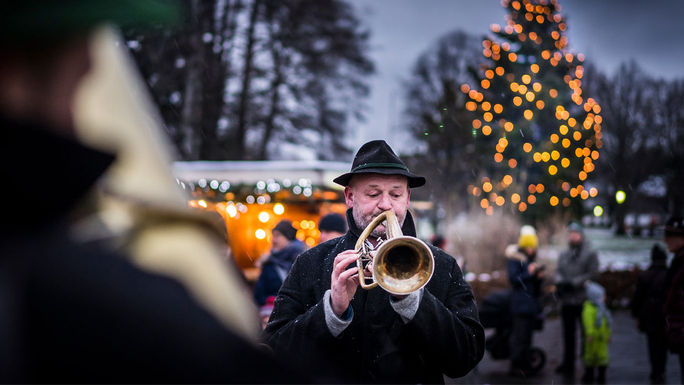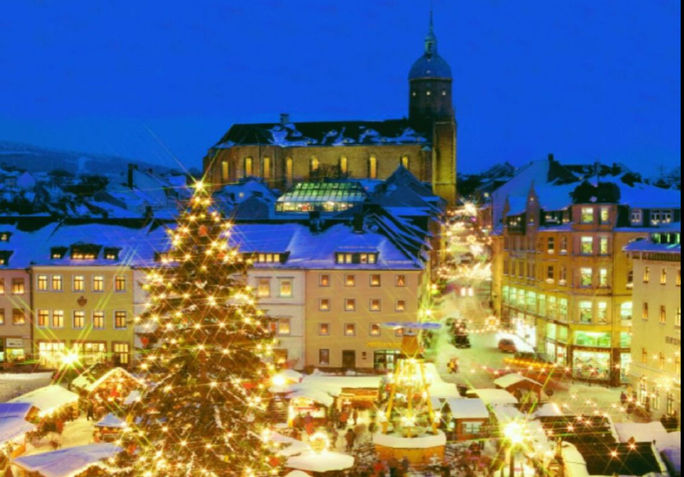Are you considering heading to Europe to visit its Christmas markets sometime soon? Great idea! I’ve been visiting the markets for over a decade now, and the magic of the experience still hasn’t waned. There are some things you should know before visiting a European Christmas market, though, so read on to get prepped for your festive trip.
Layering Up Is Essential
You’re going to want to be sure to pack layers of warm clothes for the chilly European nights you’re bound to experience. Or, just wait until you are here and buy some festive attire at one of the Christmas markets. Most of the continent sits on a far northern latitude, and things can get pretty dark & chilly this time of year, so bundling up is necessary for the best results.
Always Do a Loop
European Christmas markets are so magical that sometimes the moment you walk in, you get blinded by the twinkling lights and just grab at the first cute little gift or festive bite that you see. Slow down and make a loop around the entire market to make sure you’ve seen everything available before you settle on anything. Trust me, there’s nothing worse than seeing a food stall selling a mouthwatering bit of local food when your hands are full with something you just bought around the corner.

Look for Local Food
Any research or reading on European Christmas markets will turn up plenty of references to bratwurst and mulled wine. And while those two items are fairly ubiquitous—and smell ridiculously good in the cold winter air—there’s a lot more on the menu. Always look for local specialties mixed in with the classics, and if you’re in doubt about what you should be looking for, then just ask a local or stop by the information point.
A few personal favorites are kiachl (fried doughy discs) in Tyrol, thick & gooey Liège waffles in Belgium and raclette (a disc of cheese that is melted and then scraped off in gooey chunks), which is common in Switzerland and other places in The Alps.
The same goes for mulled wine; there are many variations worth exploring, including my personal favorite: Germany’s feuerzangenbowle, which is spiced wine laced with rum-soaked, flame-kissed sugar.
You’ll Probably Pay a Drink Deposit
When it comes time to belly up to the chalet for a warming beverage, don’t be surprised if you’re charged a couple of extra euros on top of the listed price. Don’t worry, the stallholders aren’t scamming you, that extra charge is a deposit on the mug, and you’ll get it back when you return it later on.

The Mugs Make Great Souvenirs
Or, don’t return the mug at all and keep it as a budget-friendly trip souvenir that you’ll cherish forever. The mugs usually feature a cute design with the name of the place you’re in (and the year) and are designed in a cool shape. My personal favorites are ones that take the form of a little boot.
A Little Research Pays Off
It never hurts to do some research before you roll into a Christmas market. Almost every city will have a website that lists all the stallholders, hours of operation and schedule of entertainment. It’s also worth seeing if there are any traditional events like parades or tree lighting ceremonies (usually on opening night) that you can participate in. Trust me, catching one of these could be the highlight of your entire trip.

Live Music Can Make Your Day
Keep an eye out for live music during your research because many Christmas markets feature a rotating schedule of concerts (think brass bands, choirs and others playing seasonal music). Seek them out, because catching a brass band playing under the twinkling lights or seeing strolling carolers will help crank the Christmas vibes up to 11 and make things feel extra special.
Big Cities Have Multiple Markets
Despite what you may have heard, there is no single Berlin Christmas Market. Or Cologne Christmas Market. Or Vienna Christmas Market. It’s important to know that almost every big city has multiple markets scattered around its streets, each with its own particular personality—and finding your favorite is just part of the fun.
Having multiple markets can also help with the overcrowding issues that plague some destinations. Regardless of location, weekdays are always your friend when it comes to having the best all-around European Christmas market experience.

Bigger Isn’t Necessarily Better
When researching European Christmas markets, you’ll often come across websites and travel literature bragging about how many stalls a particular market has. Well, it’s not really the quantity that matters, it’s the quality and sometimes a smaller, more intimate Christmas market has an atmosphere that just can’t be matched by the big cities. And that brings me to the last thing you should know before you visit a European Christmas market.
Don’t Stress About Destinations
One web search of “Best Christmas Markets in Europe ” will turn up a listicle with plenty of worthwhile destinations. But here’s the thing: you really can’t go wrong with any European Christmas market. Big or small, even when they’re average, they’re usually still festive as all get out. My advice? Go to one market that boasts an international reputation for greatness, but also attend a smaller, off-the-beaten-path place. Compare and contrast to your heart’s content!
Source : Travel Pulse















